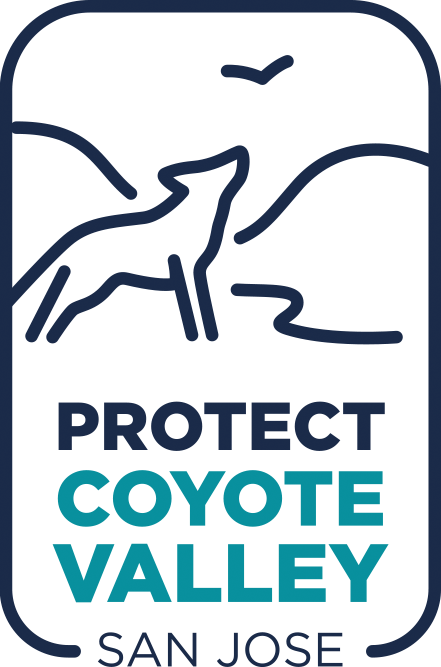The Weird and Wacky Insects of Coyote Valley
Perhaps it’s not surprising, given Coyote Valley’s status as a local hotspot for biodiversity, that the insects of Coyote Valley are quite a varied bunch. The weird and colorful collection has recently been documented by citizen scientists through programs such as BioBlitzes using cell phone cameras to log specimens. As the record of counted arthropods becomes more robust, and additional ecology studies like the Landscape Linkage report are undertaken, the entomology of Coyote Valley only looks more and more interesting. Here are some of Coyote Valley’s most noteworthy six-legged denizens.

Rare Butterflies
The bay checkerspot butterfly has a niche interest–it’s found only among wildflowers supported by serpentine soils, the harsh and nutrient-poor earth that results from the region’s natural geology. Checkerspot caterpillars are very picky eaters, preferring to dine solely on purple owl’s clover and the California dwarf plantain, both plants that grow only in serpentine soil. Springtime is the best time of year to find these butterflies, and they congregate primarily in the northern part of Coyote Valley. A threatened species, the butterflies have the good fortune to live mostly under the watchful jurisdiction of the Santa Clara Valley Open Space Authority.
Another even more famous black and orange butterfly, the iconic monarch, is also sometimes seen in Coyote Valley, at least in caterpillar form. Like the bay checkerspot, the monarch is also a butterfly with a strong preference for particular plants; caterpillars feed almost exclusively on narrowleaf milkweed.

Gall Wasps
Moving from the beautiful to the bizarre, we find that Coyote Valley also plays host to a number of species known as gall wasps. A type of parasitic wasp, many of them make their nests within the valley oaks that grow within Coyote Valley. Their signature characteristics are the strange formations they create by depositing chemicals within trees, prompting the growth of bulbous, spiny, or spherical structures known as galls.
During one BioBlitz in Coyote Valley, amateur wildlife photographers found no fewer than 8 different gall wasp species living on 3 oak species. These insect architects range from the bluntly named Red Cone Gall Wasp, which, you guessed it, induces galls that look like red cones, to the flamboyant Spined Turban Gall Wasp, whose chemical concoctions produce bright pink growths that could easily pass for arcade-game enemies.

Dragonflies
Since 2011, 23 different species of dragonflies and damselflies have been seen and documented in Coyote Valley. The availability of wet meadow and creek habitat fosters a variety of these colorful insects, which spend most of their lives underwater as larvae before emerging briefly as exceptional agile adults. Some Coyote Valley species bear names that sound like they belong in the reindeer entourage of Santa Claus, including the blue dasher, blue-fronted dancer, and Nevada’s state insect, the vivid dancer. Dragonflies are some of the earth’s most ancient insects, and navigated the skies long before dinosaurs roamed the world.
Coyote Valley is full of interesting creatures, and it’s the varied plants, habitat types, and water features make that biodiversity possible. While insects don’t often prompt the same warm feelings as mammals and birds, they are an important part of Coyote Valley’s ecosystem and a vibrant and interesting group in their own right. The more we can ensure all parts of the Valley are protected, the greater variety of animals that can live within.
About Protect Coyote Valley
The Protect Coyote Valley campaign is led by Committee for Green Foothills and supported by Greenbelt Alliance, Keep Coyote Creek Beautiful, Santa Clara Valley Audubon Society, Sierra Club Loma Prieta Chapter, SAGE — Sustainable Agriculture Education, and the Land Trust of Santa Clara Valley. It aims to preserve Coyote Valley, San Jose as open space that offers flood-buffering wetlands, an essential wildlife habitat and migratory area, and active farmlands.
